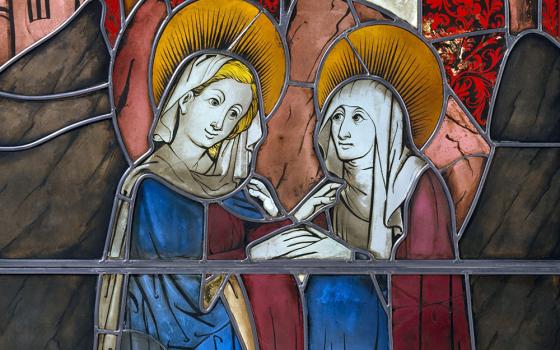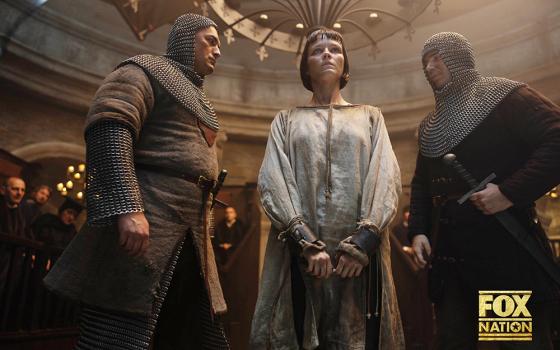ANALYSIS
Clearly the big Catholic news in America this week is the election of Archbishop Timothy Dolan of New York as President of the United States Conference of Catholic Bishops, upending the custom that the outgoing vice-president, in this case Bishop Gerald Kicanas of Tucson, more or less automatically ascends to the top job.
I wasn’t in Baltimore covering the bishops’ meeting, so I don’t have any insider scoop on the politics of that result. The consensus explanation seems to be that Dolan’s victory signals a broad conservative shift within the conference, perhaps coupled with concern that debate over Kicanas’ role in the Daniel McCormack case in Chicago might mean he would be hobbled by controversy over the sexual abuse crisis.
Without questioning that analysis, I’ll offer three observations about the significance of Dolan’s election.
First, it could be read as an admission by the bishops of something pretty much everyone else on the planet long ago realized: the Catholic church has an image problem. In the States, the past year witnessed a bruising national debate over health care reform, in which the bishops were popularly styled as chaplains to the “party of no.” The first half of the year also brought another explosion of the sex abuse crisis, with the church’s public tone, especially from the Vatican, often viewed as adding fuel to the fire.
In Dolan, the bishops have turned to their most gifted natural communicator, a leader with a demonstrated capacity to project a positive image for Catholicism in the public square. Rather than electing a behind-the-scenes broker of compromise, in other words, the bishops tapped their best front man. That choice could be taken as an imminently rational reaction to recent events.
Second, while Dolan certainly is more “conservative” than Kicanas, it’s not what’s distinctive about him. To be sure, there are plenty of other conservatives in the USCCB. Dolan’s defining quality isn’t really his ideology, but rather his capacity to build relationships with people who don’t share his outlook.
In many ways, Dolan is a high-octane, populist American expression of what I’ve called the “affirmative orthodoxy” of Benedict XVI: no compromise on matters of Catholic identity, but a determination to express that identity in the most positive key possible, keeping lines of conversation open with people outside the fold.
In other words, it might be more analytically productive to read Dolan’s election not so much as a victory of conservatives over liberals, but rather as an endorsement of the “affirmative orthodoxy” wing of the conference’s conservative majority over its harder ideological edge.
Third, although Dolan will not get the red hat on Saturday in Rome, he will almost certainly become a cardinal in the next consistory, which could come before his term as USCCB president ends. That means that twice in a row, the American bishops have elected a cardinal (or obvious cardinal-to-be) as their president.
That reversal of form too can be read in an ideological key, because aside from the fact that cardinals already have plenty of power, some bishops historically didn’t vote for cardinals because they saw them as too conservative, or too much “Rome’s man.”
Yet interestingly, the swing to leadership by cardinals and big-time archbishops can also be seen as an assertion of the autonomy of the U.S. conference vis-à-vis Rome. With Cardinal Francis George, the American bishops knew they had a leader who could go toe-to-toe with the heavyweights of the Roman Curia as a full equal, and more or less the same point can be made of Dolan.
While American bishops these days are undeniably more “evangelical” in outlook, closer to the spirit of John Paul II, they also are less inclined to defer to Roman sensibilities on many non-doctrinal matters, such as finance and institutional management. Their take-away from the sex abuse crisis, for example, is that the American bishops had it right on the “zero tolerance policy,” and those in Rome who opposed it have been proven wrong.
More generally, watching the cycle of meltdowns in Rome under Italian Secretary of State Tarcisio Bertone over the last five years, many American bishops are inclined to believe that the current Vatican regime means well but often can’t make the trains run on time. They want someone who can go to Rome and make American judgments stick, and Dolan is arguably better positioned to do so than Kicanas.
I can’t say to what extent those three points figured in the balloting this week, but sometimes the fallout from an election reaches beyond what the electorate actually had in mind, and this may well be one of those occasions.
[John L. Allen, Jr. is NCR senior correspondent. His e-mail address is jallen@ncronline.org.]




